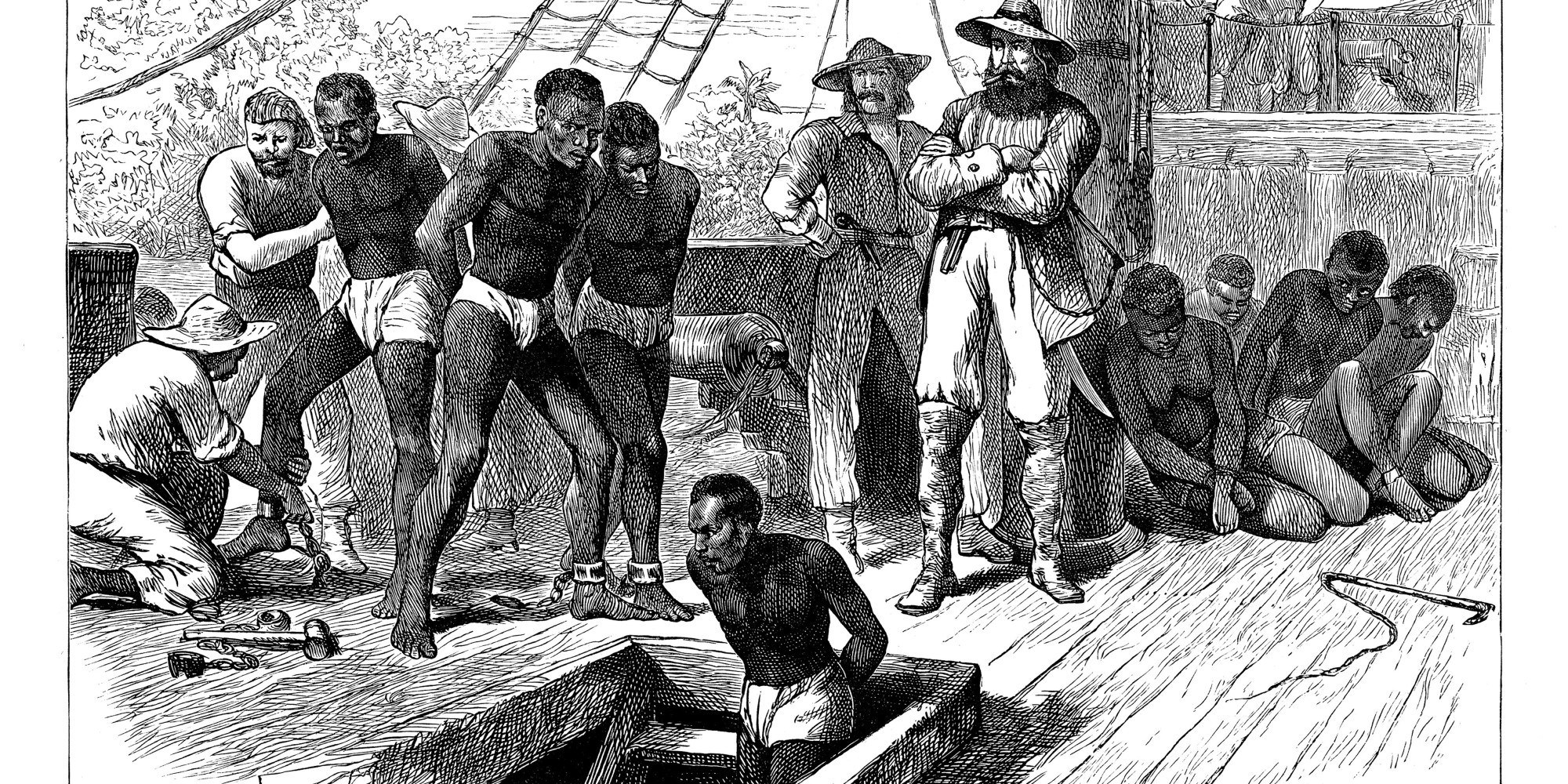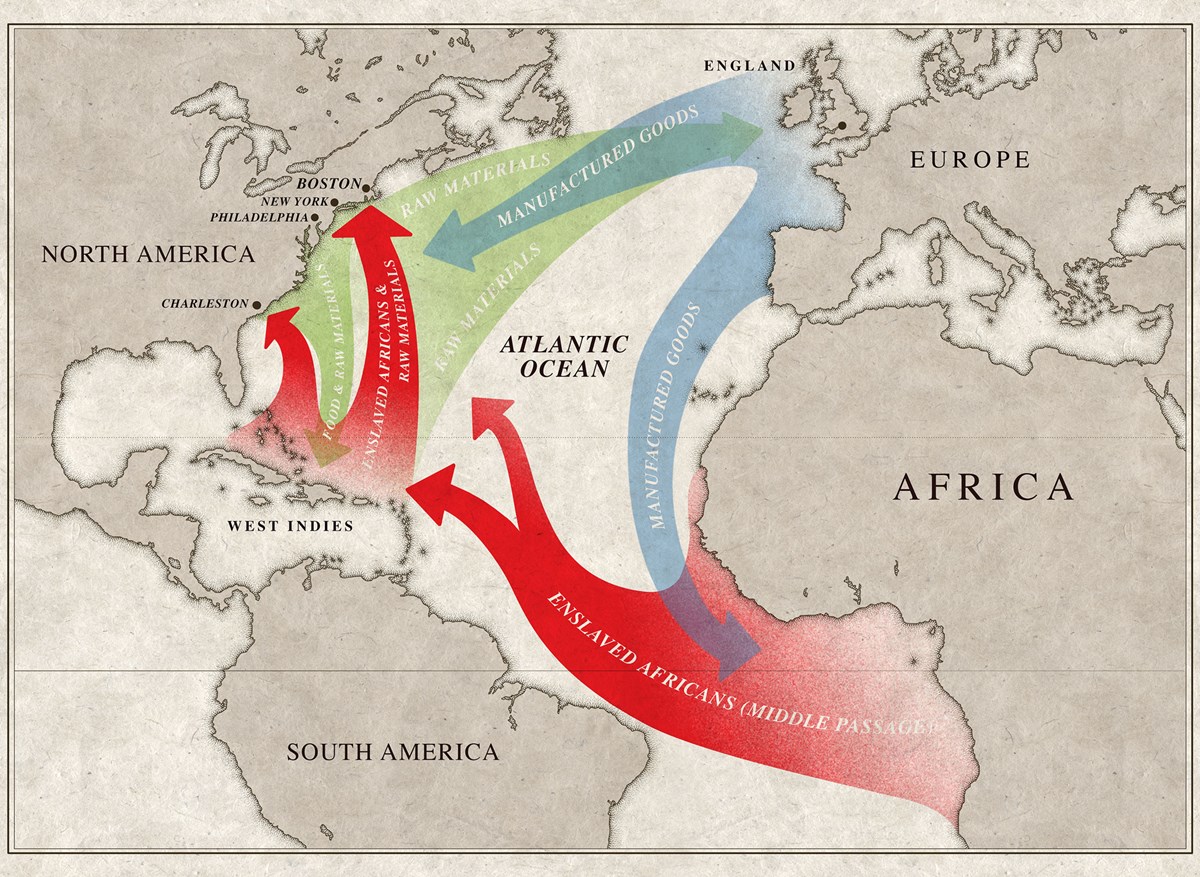Elijah Bunders
The Atlantic Slave Trade was a chain of trade that traded chains, chaining humanity to this piece of history for the worse… and for the better? Forever will the Western world remember the terrible tragedy committed on humanity by humans, a tragedy with an ideology attached that still plagues society today. Humans will do whatever it takes to never forget this time, and one way we remember is through creating documentaries, and by looking at one in particular we can see the other reasons as to what we remember of the Slave Trade…
Slavery, as a topic of collective memory, is a prickly one in today’s world. It can be argued that, since the world wouldn’t be the way it is today without racial-based slavery, the topic is necessary to discuss if one wants to look at history. The creation of the Atlantic Slave Trade, also known as the Middle Passage, was a European business venture of the early 16th century Slave Trade, and we can use documentaries as a lens to see through various perspectives on how and why the Slave Trade was manufactured.
As racial culture is still an open and visibly raw wound in the eyes of a quickly moving Western society, sometimes it can be hard to look back at how we ended up where we are today.
For over one million people on YouTube and likely more from other websites and media outlets, they sure won’t forget that the Slave Trade wasn’t entirely the European’s fault… at least, that is what the Timeline documentary Great Britain and the Slave Trade, (Great Britain And The Slave Trade) released in 2018, is working so hard to make absolutely crystal clear. The YouTube Channel, “Timeline – World History Documentaries” is officially affiliated to Great Britain, and is a part of the History Hit Network Channel. This documentary is claiming to be about Britain’s people and history with the trade. Instead, within a minute of the start of the documentary, the narrator lets us know that the real message is about helping to save historical face for Great Britain:
“This story is not just one of slave raiding by Europeans, but slave trading by Africans. Greed led African Kings to sell 12 million people across the ocean.” (1:07, Timeline Documentary)
If this documentary truly were just about Great Britain’s part in the slave trade, like the title insists, it isn’t starting very strong.

https://brewminate.com/childhood-and-transatlantic-slavery/
Great Britain and the Slave Trade takes a look at two of the three continents involved with the slave trade, including interviews with people like Dr. Akosua Perbi, a professor at the University of Ghana with a vast knowledge of old slave laws and regulations, and Julia Elton, a direct descendent of wealthy British slave trader Abraham Elton. Both describe their ancestor’s roles in the slave trade, yet while Dr. Perbi condemns the slavers, Julia Elton praises her ancestor. While Great Britain thrived off of this legacy, the documentary argues, it wouldn’t have been possible without the African contribution to the process. While that is a fair point, it’s a strange thing to point out specifically in regards to your own personal history with the concept.
While the documentary does look at Great Britain and Africa, it is leaving out a big part of its legacy. This lack of thought into the representation of former British South American slave colonies, which are now sovereign countries, such as Antigua, Barbuda, and Barbados, (On Barbados, the First Black Slave Society | AAIHS) goes to show that Timeline’s true intentions of this documentary wasn’t to cover the slaving sins of Britain, but to uncover a “scapegoat” of sorts. I argue that the documentary already expects you, the viewer, have some sense of the fact that it was a deeply dark Africa, it is leaving out a big part of its legacy. This lack of thought into the representation of former British South American slave colonies, which are now sovereign countries, such as Antigua, Barbuda, and Barbados, (On Barbados, the First Black Slave Society | AAIHS) goes to show that Timeline’s true intentions of this documentary wasn’t to cover the slaving sins of Britain, but to uncover a “scapegoat” of sorts. I argue that the documentary already expects you, the viewer, have some sense of the fact that it was a deeply dark and disturbing part of the European past. The comments under the video linked go to more or less prove this: commenter Monik Porter said “I am very happy to hear we finally acknowledged the actions of our own Africans are also accountable. The fact is there are aware that their own people became a bargain for themselves. It’s the same now – we fight against each other.”

https://www.nps.gov/articles/the-middle-passage.htm
The “Triangle Trade,” (The Middle Passage (U.S. National Park Service) (nps.gov) is called such due to the fact that it has three stops: Europe, then Africa, and then the Americas, before finally back to Europe. Why is it then, in this case, that only two of the three continents’ histories and points of view are documented? That’s because it isn’t about documenting history, it’s about pushing the narrative of European capitulation as a whole into the Slave Trade. Trying to reconcile with slavery by saying “well it wasn’t just one group’s fault,” or that “white people were slaves, too,” paradoxically under-simplifies the nature of racial slavery and its evolution to modern systemic and societal issues regarding race.
One thought on “Hidden Meanings and Educational Documentaries: A Perspective”
Comments are closed.